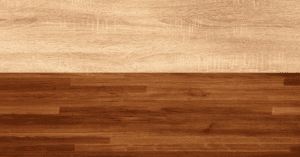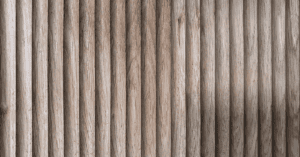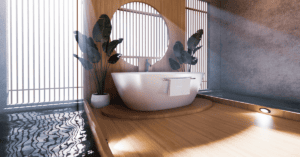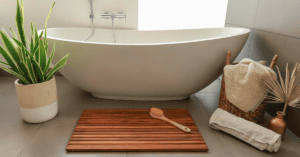Teak and ipe are among the most durable woods today. But which is the better choice for your woodworking project? Find out below!
When I am shopping for wooden furniture, one of the factors I consider is its durability. I want to ensure it can withstand various conditions and elements. That is why I ended up weighing ipe vs. teak.
Both hardwoods are popular choices for their hard-wearing construction. They can also beautify the wood grain.
Despite these similarities, ipe and teak are two distinct types of wood. It is essential to know their differences before making a purchasing decision.
Below, I will discuss their unique benefits and properties to guide you. Let us jump right in!
Teak vs. Ipe: Background Overview
Below is a brief overview of teak and ipe wood. This section will help you learn the basic properties of both hardwoods before comparing them.
What Is Teak Wood?
Teak is a hardwood native to tropical regions in Southeast Asia and Central America.
Plantation teak has a high oil content that withstands water and UV rays. It also offers a Janka hardness rating of 1,070 to 3,000 lbf (pound-force), depending on the hardwood species. This figure means that it can resist most scratches and stains.
Furthermore, teak wood is popular for its smooth texture and grain pattern. Meanwhile, it has a distinct golden brown color. However, this shade can fade into a silver-gray patina over time. But depending on your preferences, old growth teak can still be an attractive option for your patio or backyard.
Overall, teak is a durable and aesthetically-pleasing hardwood.
Pros and Cons of Teak Wood
There are several reasons to use teak for furniture, decking, or hardwood flooring. However, I can also list the drawbacks of choosing this hardwood.
Below are the advantages and disadvantages of using teak wood to help with your purchasing decision.
Pros:
- One of the most exotic woods
- The natural oils make a durable hardwood
- It can withstand various conditions and weather elements
- It provides resistance to decay, scratches, and stains
- Silky smooth texture
- Distinct rich honey or golden brown color
Cons:
- Expensive, especially variations like Burmese teak
- It is not readily available
What Is Ipe Wood?
Ipe, also known as Brazilian walnut or Lapacho, comes from an exotic wood native to Central and South America.
It features an extremely strong and durable wood fiber. In fact, it boasts a hardness of 3,684 lbf, according to the Janka scale. Therefore, it can very well resist abrasion, decay, insects, and stains.
Ipe hardwood has a fine to medium texture with straight or irregular grain patterns. Meanwhile, its color can vary from deep reddish brown to yellow-olive brown. Although it offers excellent weathering properties, it can eventually develop a gray patina.
Nevertheless, ipe wood is an excellent alternative to teak because it is cost-effective and tougher.
Pros and Cons of Ipe Wood
Ipe hardwood has several benefits suitable for various woodworking projects. However, it still has its fair share of disadvantages.
The following is a brief list of ipe’s pros and cons.
Pros:
- It is decay, water, and insect resistant
- It can withstand excessive exposure to moisture, sunlight, and harsh outdoor elements
- Eco-friendly and sustainable lumber practices
- Versatile colors and grain patterns
- Cheaper ipe vs. teak
Cons:
- Heavy material because of the wood’s density
- It is difficult to cut and install
- It is susceptible to oxidation and rust
Teak vs. Ipe Differences: A Detailed Comparison
This detailed comparison of teak vs. ipe discusses the differences between the two popular hardwoods. Stick until the end of this section to learn which wood is better for your needs.
Appearance
Teak and ipe wood have distinct looks.
Teak wood is popular for its warm or golden brown color. It mostly has a straight grain pattern, but it also comes in a wave or interlocking design. Meanwhile, the surface of raw and unfinished teak tends to be oily. The reason is it contains a high concentration of natural oils.
In contrast, ipe or Brazilian walnut wood varies in color. It is available in deep red, yellow olive brown, and dark brown shades.
Ipe also offers straight to irregular grain. It has a natural luster, but not as shiny as teak.
It is up to you to choose which hardwood to choose for its appearance. Regardless of your decision, both options can improve your interior and exterior design.
Verdict: A tie
Durability
Many factors determine the durability of wood species. However, none is as accurate as the Janka hardness scale. It determines the material’s longevity and resistance to the elements.
We already mentioned the hardness rating of both teak and ipe.
To reiterate, teak hardness is rated between 1,070 to 3,000 lbf. In contrast, ipe offers a rating of 3,684 lbf.
As you can tell, ipe hardwood is more durable than teak. It provides better resistance to moisture, UV light, and weathering.
Verdict: Ipe wins
Water Resistance
Both ipe and teak wood have reliable water resistance. They do not quickly twist or warp when exposed to rain or moisture.
However, raw and untreated teak offers better performance than ipe wood. The reason is its natural oils. These lubricants create a water-tight seal to prevent moisture damage. They also help the fine lumber hold its shape better.
Ipe hardwood can still withstand water. But if you live in an area where it occasionally rains, consider using teak instead.
Verdict: Teak wins
Maintenance
Teak requires cleaning every three to four months. When left exposed to dirt and dust, the wood can degrade faster. So, you might want to consider sealing the teak with oils or varnishes to extend its lifespan.
Fortunately, teak maintenance is relatively easy. A cleaning solution of soap and water is enough to remove debris in most cases.
On the other hand, ipe wood needs little to no maintenance. Sealing is unnecessary because the hardwood already has a natural resistance to mold and mildew. It also does not require regular cleaning. But if stains occur, they are easy to remove with a clean cloth and soapy water.
Verdict: Ipe wins
Versatility
Teak and ipe are highly versatile hardwoods. They can suit various woodworking projects. However, they have distinct specialties.
For instance, teak is a popular choice for furniture making. It is ideal for both indoor and outdoor tables, chairs, and lounges. Teak is also prized in the boating industry. Its durability and natural water resistance make the hardwood effective in yacht and boat building. Notable projects include teak boat deck, trim pieces, and other boat building applications.
In contrast, ipe wood is primarily used for exterior decking projects because of its durability. Ipe decking surpasses other hardwoods in almost every category. These include hardness, stability, and even attractiveness.
Moreover, ipe, as a decking material, can withstand decay, insects, mold, and mildew. It can easily outlast many flooring and decking materials.
To summarize, teak and ipe are neck and neck for their applications.
Verdict: A tie
Sustainability
A hardwood is considered sustainable if it comes from a renewable source. That means you can topple and replant trees with little effect on the environment. Some species are more sustainable than others, including ipe.
Ipe is not an endangered hardwood. It grows in healthy plantations in Central and South America. However, ipe trees have slow growth rates. This can result in insufficient harvestable trees.
Meanwhile, teak is not a sustainable hardwood. The reason is plantation teak suffered from over-exploitation and excessive logging in the past. This particular hardwood also takes some to grow. So even if there have been efforts to regrow the forest, we are yet to see their effects.
Verdict: Ipe wins
Price
Teak is among the most expensive commercial hardwoods for several reasons. These include its durability, attractive finish, and low supply on the market.
On the other hand, ipe wood has a reasonable price tag. It is also more readily available than teak. However, it is not exactly cheap because of its imported quality and exceptional hardness rating.
That said, ipe is more inexpensive compared to teak wood.
Verdict: Ipe wins
Conclusion
The teak vs. ipe debate might seem unnecessary. After all, both hardwoods are attractive, durable, and versatile. However, they have unique properties that make them suitable for certain woodworking projects.
Teak has natural moisture resistance. It can also withstand UV rays, sunlight, and extreme weather conditions. Therefore, it is an excellent option for furniture and boat construction, such as a teak boat deck.
Meanwhile, ipe is among the hardest woods. It offers solid resistance to decay, insects, mildew, and other outdoor applications.
Ultimately, you cannot go wrong with either choice. However, it is essential to use the hardwood that best suits your needs and preferences.






